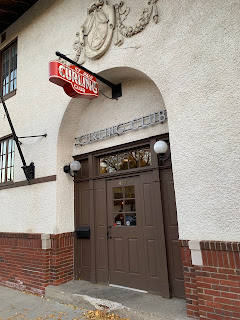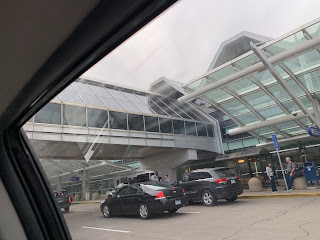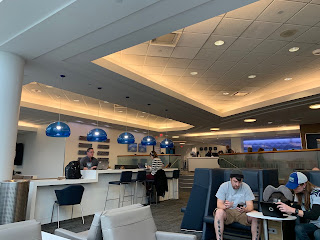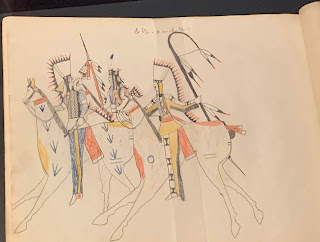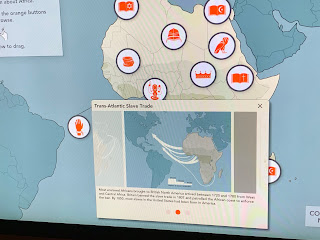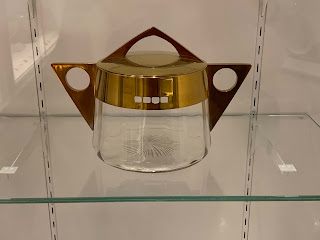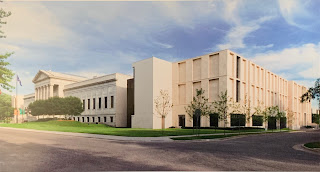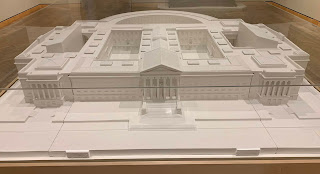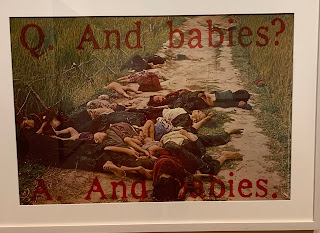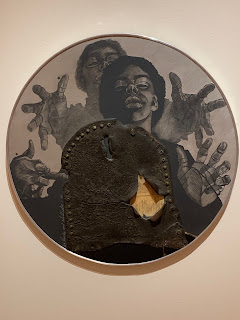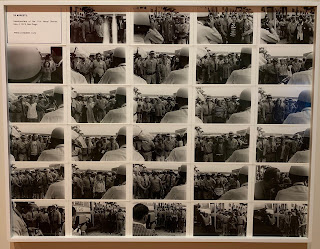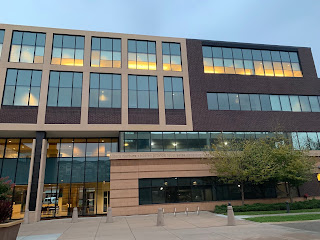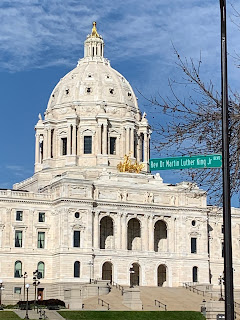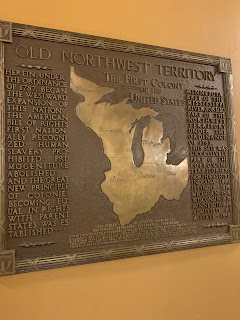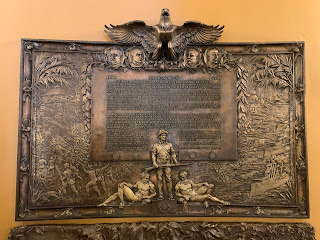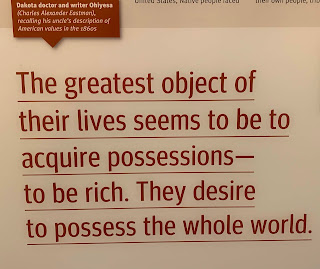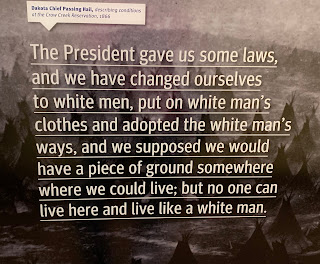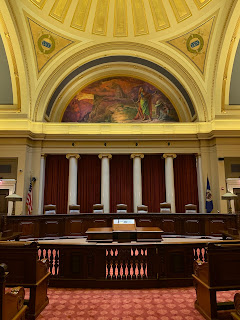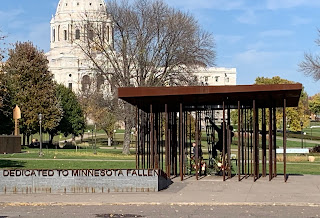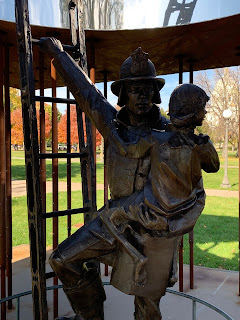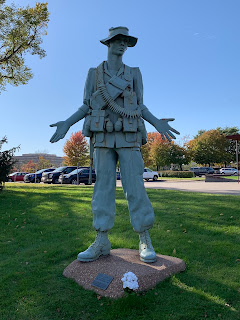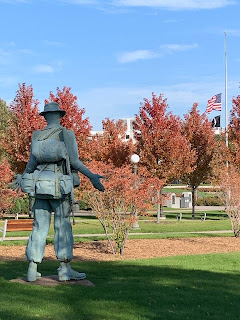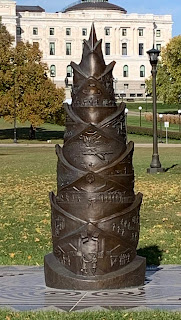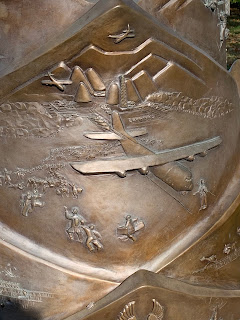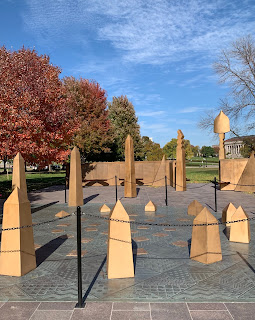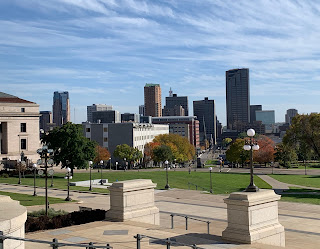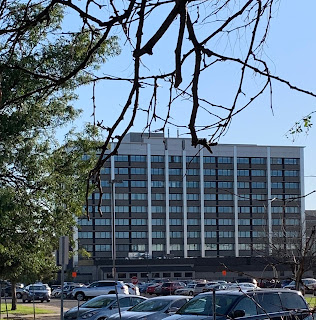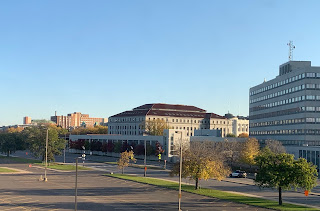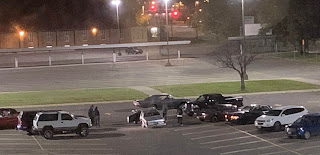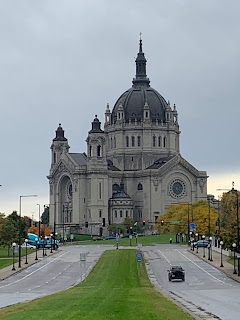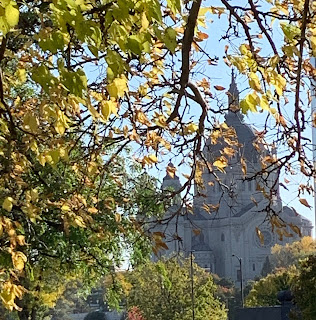According to
Wikipedia, the
Minnesota State Capitol Building "...was built by Butler-Ryan Construction and designed by Cass Gilbert and modeled after the larger Saint Peter's Basilica in Rome. The dome is the largest unsupported marble dome in the world, as Saint Peter's is made of concrete. However, like all capitols with domes in the US it is also inspired by the idea of domed capitols originating with the United States Capitol dome. Work began on the capitol in 1896, its corner-stone laid July 27, 1898, and construction was completed in 1905."
An interesting
website was put together to pay homage to as many of the original workers as possible. Many fascinating stories and interactive maps are available.
The Capitol Building was recently
renovated, in a major project that lasted from 2013 until 2017. Beautifully done:
These gold statues are the Quadriga. "Created in 1906 by Daniel Chester French (the same sculptor responsible for Lincoln at the Lincoln Memorial in Washington) and Edward Potter, 'Quadriga: Progress of the State' stands at the base of the Minnesota State Capitol’s dome. The sculpture shows a man on a chariot driving four horses and flanked by two women. The man represents the state’s drive for progress and prosperity. The four horses represent the forces of nature (earth, fire, water and air) and are controlled by the two women who represent industry and agriculture (or civilization collectively)."
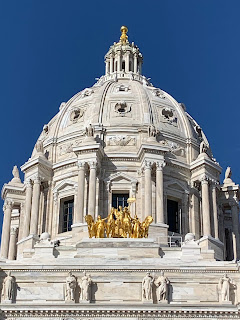 |
| Sculptors: Daniel Chester French and Edward Potter; dedicated in 1906 |
The interior of the dome:
Another view; looking up from first floor:
A plaque about Minnesota being part of the "Old Northwest." I guess we live in the New Northwest:
There are many plaques to Minnesota soldiers throughout the space, including this one to the 13th Minnesota All Volunteer Infantry, 1898 - 1899:
There was also an exhibit about the Native peoples that the Americans displaced and broke treaties with. Here are two placards from that exhibit.
This one is from a quote by "Dakota doctor and writer Ohiyesa (Charles Alexander Eastman), recalling his uncle's description of American values in the 1860s":
This one is from a quote by "Dakota Chief Passing Hail, describing conditions at the Crow Creek Reservation, 1866":
The Minnesota House of Representatives Chamber. From
mnhs.org, "The Senate and House meet in regular session each biennium for a total not exceeding 120 legislative days." They were not in session while we were in town and won't meet again until February 2020.
Closeup of the image above the speaker's desk. Her pedestal reads, "The trail of the pioneer bore the footprints of liberty."
Minnesota State Senate Chamber:
Minnesota State Supreme Court Chamber:
The Governor's Reception Room, featuring a painting by Howard Pyle:
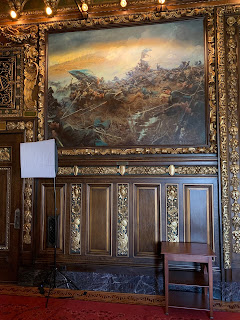 |
| Battle of Nashville, Howard Pyle, 1861 - 1865 |
A kitty cat decorating a marble bench:


